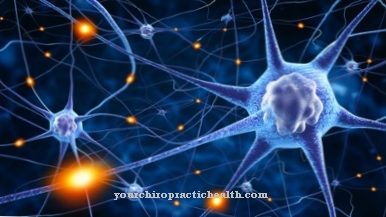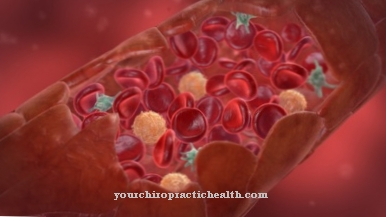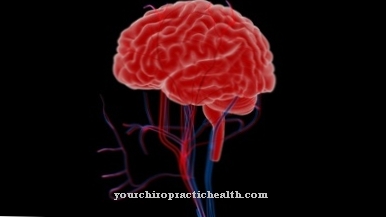Of the Crying reflex is one of many early childhood movement reflexes that are triggered by certain stimuli. When the baby is held up under the armpits and their feet feel a firm surface, they move their legs in a kicking pattern that is reminiscent of striding and walking. The reflex is already present at birth and slowly disappears 2 months after birth.
What is the scream reflex?

The walking reflex is one of the early childhood motor reflexes that are triggered by certain touches or positions of the body or the head and follow an innate pattern that occurs unconsciously without the involvement of the cerebrum. Reflexes are therefore always reproducible and are not subject to a learning process.
The crying reflex is triggered when the baby is brought into an upright position and held and the feet feel a firm surface. It then just seems to want to march off and makes step-like movements with its legs.
The walking reflex develops at an early stage of pregnancy and is noticeable before the birth by occasional kicking. The reflex usually breaks down about two months after the birth. The early disappearance of the reflex suggests that it cannot be associated with learning to walk upright.
The conscious walking on two legs poses great challenges for coordination and body orientation and for the resilience of certain muscle parts and]] joints]]. Babies only develop the urge to walk upright when they are around ten to twelve months old, as a follow-up phase to the crawling age.
Function & task
Most early childhood motor reflexes are designed to protect the baby and make it easier to eat. Without the sucking and swallowing reflex, which is triggered in the baby by touching the lip region, no food intake would be possible in the initial phase after birth.
A few reflexes are already present prenatally and mainly serve to support the birth process. The walking reflex is also one of the motor reflexes that are present and developed many weeks before the due date.
The fact that the reflex disappears within a month or two after birth suggests that it has no significant postnatal function. It is of no importance for learning to walk upright because it has long since been broken down by then and walking upright on two legs is a complex, multi-sensory controlled, voluntary process that is coordinated via the neocortex. The later automation of upright walking is possible by storing the multi-sensory processes in the so-called multi-sensory movement memory.
There is no connection with any motor reflexes and therefore cannot be associated with the crying reflex of a newborn.
The postnatal benefit of the walking reflex is not clearly recognizable. Its usefulness is most likely in the prenatal phase. The reflex becomes noticeable prenatally as the baby occasionally struggles in the womb as soon as the sole of the foot hits the wall of the uterus. It is very likely that the main role of the walking reflex is in promoting brain maturation and leg muscles. It may also be of particular importance for taking the correct birth position, which the unborn child can better reach through its reflexive kicking.
Illnesses & ailments
Some of the early childhood reflexes, also known as primitive reflexes, are central to the birth and survival of the newborn in the first phase of life. Reflexes, whose importance lies in the prenatal phase, usually regress shortly after birth.
The other motor reflexes regress in the course of the first twelve months of life because their functions are usually taken over by voluntary motor processes. A few reflexes remain lifelong, e.g. B. the blink reflex, which serves to protect the eyeball from foreign objects or extreme incidence of light. Another example is the temperature reflex, which triggers a lightning-fast withdrawal of the hand if the fingers z. B. come into contact with a hot stove. E.
The absence of the crying reflex after birth has no immediate threatening effects on the newborn, because the reflex is of no particular importance for the postnatal phase. However, in this case it should be clarified why the reflex is not present or is too weak. On the one hand, there could be undesirable developments in the leg and hip muscles or in the functionality of the joints, on the other hand, there could be undesirable developments in the central nervous system or in the peripheral nervous system or in the innervation or nerve conductivity.
Before further examinations and clarifications, other motor and non-motor reflexes can serve as a differential diagnosis. What may sound strange at first is the fact that the absence of certain reflexes usually has far less serious effects than their persistence. If certain reflexes are not broken down around the natural point in time, but rather remain as reflexes, this hinders the transition to the voluntary control of motor processes through corresponding centers in the neocortex.
If the walking reflex does not break down in the first or second month of life, the learning phase for the upright gait turns out to be very difficult, because reflex leg movements disrupt the learning process. Experts associate poorly broken down early childhood reflexes with learning and language disorders and with abnormal behavior such as ADHD.

























.jpg)


